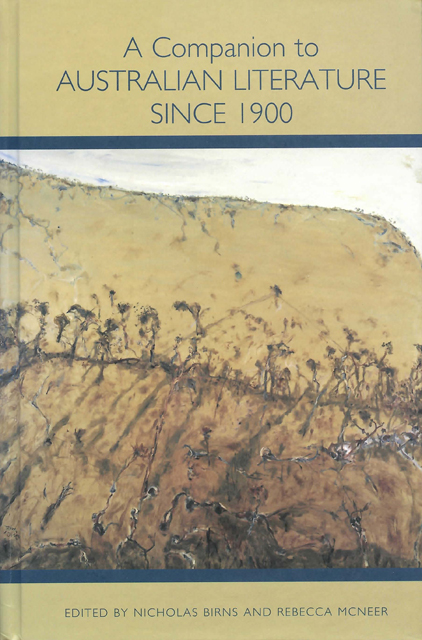Book contents
- Frontmatter
- Dedication
- Contents
- Chronology of Main Events in Australian History, 1901–2005
- Acknowledgments
- Note on the Cover Illustration and Artist
- Introduction
- Part 1 Identities
- Part 2 Writing Across Time
- Part 3 International Reputations
- Part 4 Writers and Regions
- Part 5 Beyond the Canon
- Notes on the Contributors
- Index
30 - Australian Gay and Lesbian Writing
Published online by Cambridge University Press: 10 March 2023
- Frontmatter
- Dedication
- Contents
- Chronology of Main Events in Australian History, 1901–2005
- Acknowledgments
- Note on the Cover Illustration and Artist
- Introduction
- Part 1 Identities
- Part 2 Writing Across Time
- Part 3 International Reputations
- Part 4 Writers and Regions
- Part 5 Beyond the Canon
- Notes on the Contributors
- Index
Summary
The Problem of definition looms large over gay and lesbian writing, particularly given its proliferation: the Austlit database, which lists creative works, already has more than a thousand entries pertaining to homosexuality. A set of complex questions about definition, reading position, and canonicity have been opened up in part by lesbian, gay, and queer activism (see Willett), as well as being energized by and reflected in academic study (see Donovan and Chan; Levy). If “gay,” “lesbian,” and “writing” are all potentially problematic categories, so too is “Australian,” a point at issue not only in creative writing but in criticism. There are a set of useful reference tools for those in search of lesbian, gay and queer texts. Austlit has already been mentioned; another useful resource is Michael Hurley’s A Guide to Gay and Lesbian Writing in Australia (1996; see also Knobel; Greenaway). This is essentially a dictionary of gay and lesbian literary culture, but also covers topics related to theatre, publishing, and lesbian and gay cultural icons. Hurley, in his entries on major Australian writers, also notes the silence or homophobia of critics. One canonical early twentiethcentury writer whose reputation highlights the role of dominant heteronormative reading practices in sustaining the ambiguous inside/out position of specific writers is Henry Handel Richardson (pseud. of Ethel Florence Lindesay Richardson, 1870–1946). With some exceptions, especially Carol Franklin, scholarship on Richardson’s fiction is usually silent on her exploration of non-normative sexual desires and identities. This is surprising considering that her oeuvre ranges from the male homosociality and homoeroticism of Maurice Guest (1908), to same-sex female desire in her classic Bildungsroman, The Getting of Wisdom (1910), and the almost spectral eroticism of the much lesbian-anthologized short stories from “The Growing Pains” section of The End of a Childhood (1934), especially “Two Hanged Women.”
Because of the tendency among critics to set aside early texts which problematize (hetero)sexual identity, and to admit as “gay or lesbian writing” only those works which explicitly foreground sexual relationships, Kenneth “Seaforth” Mackenzie’s The Young Desire It (1937) is often cited as the first Australian homosexual novel, dealing as it does with a teacher’s unfulfilled desire for his student.
- Type
- Chapter
- Information
- A Companion to Australian Literature since 1900 , pp. 445 - 458Publisher: Boydell & BrewerPrint publication year: 2010



